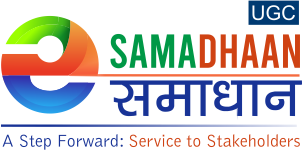Sugarcane Research Centre, Akola
About Station

Sugarcane Research Centre was established in the year 1974 at Dr. Panjabrao Deshmukh Krishi Vidyapeeth, Akola. Later on it was shifted to Tharsa in the year 2019.
This Center is working voluntarily on sugarcane and conducting the AICRP projects on following themes
- Crop Improvement
- Crop Production
- Integrated Pest and Diseases Management
Administrative Setup
Director of Research
Senior Research Scientist (Sugarcane)
AICRP on Sugarcane
(Voluntary Centre)
Agro Climatic Information
Rainfall:- Avg. annual Rainfall is 978.40 mm
Soil Type :- Black Cotton Soil
Infrastructure
| Location | Area(Ha) |
| Tharsa | 1.0 |
Mandate
- To identify early and midlate sugarcane genotypes having high yield potential of cane and sugar with good rationing ability, tolerant to pests, diseases and drought and suitable for soil and climatic conditions of Vidarbha.
- To develop production technology of sugarcane taking into account constraints of the region.
- To develop low cost technology for sugarcane production.
- To develop integrated pest and disease management practices.
- To produce breeder seed and implementation of foundation and certified seed production.
Objectives
- Test different oilseeds varieties and advanced breeding lines for its suitability and their screening for location specific adaptability
- Identify and develop varieties of oilseeds of the region for resistance to pests and diseases, early maturity and drought tolerance characteristics
- Improve oilseeds crop productivity for better monetary return by developing suitable cropping systems under given farming situation
Scientists
In this station following posts are sanctioned
- Associate Professor of Agronomy & Senior Research Scientist (Sugarcane)
- Assistant Professor of Agronomy
- Assistant Professor of Biochemistry
- Assistant Professor of Plant Pathology
- Assistant Professor of Entomology
- Assistant Professor of Soil Water Management
Projects Operating at Station
Crop Improvement : Zonal Varietal Trials of AICRP (Sugarcane )
Crop Production: Agronomical trials of AICRP (Sugarcane )
Plant protection:
- Evaluation of zonal varieties for their reaction against major pest and diseases of sugarcane
- Survey and Surveillance of sugarcane insect pests
- Monitoring of insect pest and bio-agents in sugarcane agro-ecosystem
Research Activities and Achievements
Dr. Panjabrao Deshmukh krishi Vidhyapeeth, Akola has recommended sugarcane varieties based on the needs of cultivators of this region. In addition 14 recommendations have been given on crop production and crop protection.
Varieties recommended by University : Co 86032, Co 94012, CoM 0265
Research Recommendations (Approved in AGRESCO)
|
On the basis of research studies conducted at Akola, during 1984 – 1985 to 1986-1987 it is recommended that suru sugarcane should be planted in January for maximum tonnage. However, its planting may delayed up to 15th March, but after 15th March it should not be planted On the basis of research studies conducted at Akola, during 1984 – 1985 to 1986-1987 it is recommended that suru sugarcane should be planted in January for maximum tonnage. However, its planting may delayed up to 15th March, but after 15th March it should not be planted
|
 |
||||
|
Experiments conducted during 74-75 to 1977-78 on fertilizer requirement of sugarcane variety viz, Co 1163 at Akola revealed that for obtaining high yields of suru sugarcane 175 kg N /ha and 100 kg P2O5 /ha be applied to medium soil. There was no significant response to potash application.
|
 |
||||
|
Studies conducted during 1975-76 to 1977-78 in respect of split application of NPK to sugarcane variety Co 740 at Akola revealed that 1) Nitrogen may be applied in four splits to sugarcane i.e. 1/10, 4/10, 4/10 and 1/10 or in three splits in the proportion of 2:2:1 or two splits in the proportion of 1:1. The time of application of various splits are as under
Four splits Three splits Two splits 1 At planting 1 At planting 1 At planting 2 At 8 weeks 2 At 12 weeks 2 At earthing 3 At 14 weeks 3 At earthing 4 At earthing Phosphate and potash may be applied at planting alone or in two splits doses in the prop oration of 3:1 or 1:1 at the time of planting and earthing up respectively. |
 |
||||
|
On the basis of fertilizer management studies for pre seasonal sugarcane conducted at Akola during 1983-84 and 1985-86 it is recommended that 175 kg N, 100 kg P2O5 and 100 kg K2O /ha be applied for western part of Vidarbha. Further the study revealed that split doses of Nitrogen i.e. 25 kg at planting, 75 kg after 8 weeks, 25 kg after 14 weeks and 50 kg at earthing and phosphorus and potassium in two equal split doses i.e. 50 kg at planting and 50 kg at earthing up should be applied.
|
|||||
|
Studies conducted at Akola during 1986-87 to 1988-89 confirmed the earlier recommendation of 175 kg N /ha for suru planting ( Co 740, Co 62175) The same dose also holds good in case of Co 7219 (Sanjivani) and CoM 7125 (Sampada) for Eco-unit VI. It is recommended to apply this dose in three splits i.e. 25 kg N at planting, 90 kg N at 8 – 10 weeks after planting and 60 kg N at earthing up.
|
|||||
|
Studies conducted at Navegaon bandh during 1986-87 to 1989-90 to assess the Nitrogen requirement of sugarcane varieties Co 740 and Co 7219, indicated that the recommendation of 175 kg N /ha for suru sugarcane of Western Vidarbha also holds goods for Eastern Vidarbha zone. The Nitrogen may be given in three splits i.e. 30 kg at planting, 90 kg at 10 weeks after planting and 55 kg at earthing up.
|
|||||
|
Three years data on weed control in sugarcane (1979-80 to 1981-82) indicated that cultural method of weed control did not differ significantly from chemical weed control and trash mulching. The weedicides included were Diuron 1 kg /ha, Gramoxone 2.5 kg and Feroxine 2.5 kg /ha after 30 – 35 days of 1st spraying of Atrazine 2.5 kg /ha. The cost of weed control by cultural methods ( 3 hand weeding) was the lowest. However, when labour is in short supply use of Atrazine 2.5 kg /ha. or Diuron 1 kg /ha on soil prior to weed emergence has been recommended.
|
|||||
|
Studies conducted during 1979-80 to 1981-82 to determine the scheduling of irrigation to sugarcane reveled that when irrigation is scheduled at cumulative evaporation of 125 mm (16 irrigations) instead of 75 mm (25 irrigation) the harvestable cane tonnage decreased from 96 mt to 80 mt /ha. Hence, 25 irrigations at 75 mm CPE have been recommended. The study further revealed that when irrigation water is limited trash mulching @ 2.5 t/ha after the emergence of sugarcane with 16 irrigations scheduled at 125 mm CPE is recommended.
|
|||||
 |
 |
On the basis of inter cropping trials conducted at Akola from 1982-83 to 1985-86 it is recommended to adopt for higher monetary returns inter cropping of onion or summer ground nut in suru sugarcane with a fertilizer dose of 200 kg N, 125 kg P2O5 and 125 kg K2O /ha in Western part of Vidarbha, Bhendi and Cowpea were found to be adversely affecting sugarcane yield and hence should not be taken as inter crop.
|
|||
|
Chemical control studies on whip smut in sugarcane transmitted through setts conducted at Navegaon Bandh during 1986-87 to 1988-89 reveled that all the fungicidal treatments as well as hot water treatment to cane setts were at par in effective control of whip smut over control. However, on the basis of CB ratio fungicidal treatment of 0.1 % carbendazim solution for 10 minutes has been recommended as it recorded the highest yield of sugarcane
|
|||||
| It is recommended that 350 kg N + 150 kg P2O5 +150 kg K2O /ha should be given to seed crop of sugarcane in six splits. | |||||
|
Release of 35 earthworms / kg of substrate is recommended for conversion of half decomposed sugarcane trash in to vermicompost within a period of 60 days.
|
|||||
|
Application of 75 % of recommended N through inorganics (131 kg N ha-1) + 25 % of N through FYM (7.5 t ha-1 N) + Bio-fertilizers ( Azotobacter +PSB @ 10 kg ha-1 each) + Bio-pesticide (Trichoderma @ 2.5 kg ha-1) for suru sugarcane and in addition to above, trash mulching and green manuring of Sunhemp (Rhizobium inoculated @ 25 g/ kg seed) each in alternate rows for ratoon is recommended for increasing yield, NMR and improving physico-chemical properties of soil.
|
|||||
| For higher NMR, in paird row planting of pre-seasonal sugarcane (90x180cm) intercropping of onion (15x15cm), raddish (45x15cm)and cabbage(45x60cm) is recommended |
 |
 |
|||
Transfer of Technologies
- Transfer of technologies through front line demonstrations on farmers fields
Publications
Booklet:-1. Oos Vyawasthapan (74 pages)
Folders :-
- Shetkaryachya Samrudhisathi Adhunik Oos Lagwad
- Oos Lagwad Tantra

- Oosavaril Lokri Mava ani Vyawasthapan
- Oosavaril varil Kidi wa Rogache Vyawasthapan
Contact Information
Senior Research Scientist
Sugarcane Research Center
Tharsa, Tahsil.-Mauda, Dist.; Nagpur 441106
Mobile : 09421818112
E-mail : srssugarcane@pdkv.ac.in, tharsasrssugarcane@gmail.com








 Krishikosh Repository
Krishikosh Repository


